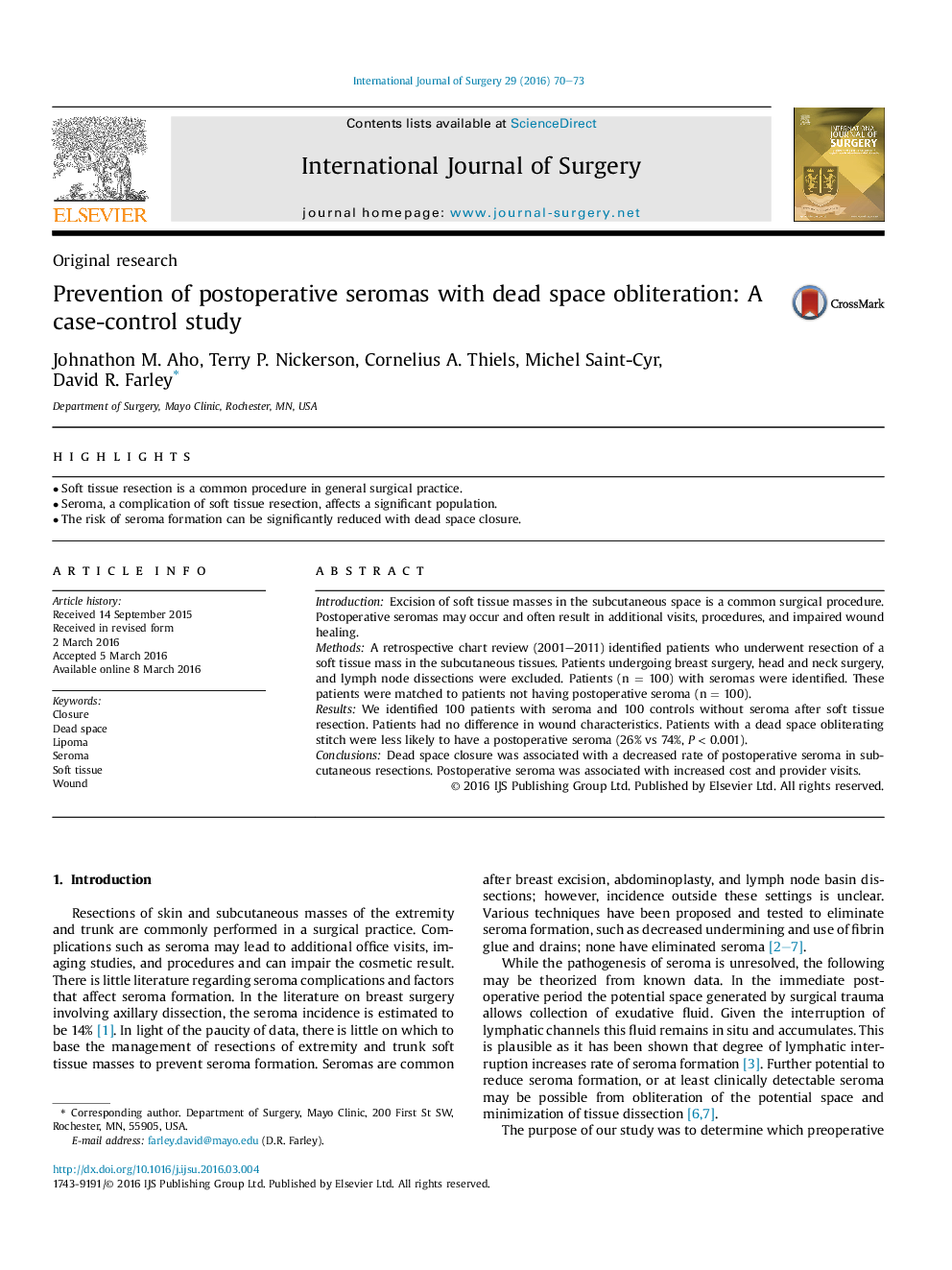| Article ID | Journal | Published Year | Pages | File Type |
|---|---|---|---|---|
| 4285427 | International Journal of Surgery | 2016 | 4 Pages |
•Soft tissue resection is a common procedure in general surgical practice.•Seroma, a complication of soft tissue resection, affects a significant population.•The risk of seroma formation can be significantly reduced with dead space closure.
IntroductionExcision of soft tissue masses in the subcutaneous space is a common surgical procedure. Postoperative seromas may occur and often result in additional visits, procedures, and impaired wound healing.MethodsA retrospective chart review (2001–2011) identified patients who underwent resection of a soft tissue mass in the subcutaneous tissues. Patients undergoing breast surgery, head and neck surgery, and lymph node dissections were excluded. Patients (n = 100) with seromas were identified. These patients were matched to patients not having postoperative seroma (n = 100).ResultsWe identified 100 patients with seroma and 100 controls without seroma after soft tissue resection. Patients had no difference in wound characteristics. Patients with a dead space obliterating stitch were less likely to have a postoperative seroma (26% vs 74%, P < 0.001).ConclusionsDead space closure was associated with a decreased rate of postoperative seroma in subcutaneous resections. Postoperative seroma was associated with increased cost and provider visits.
